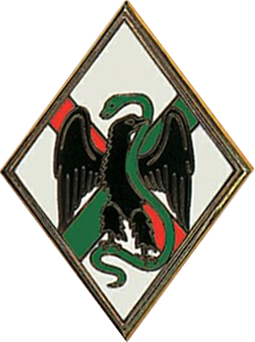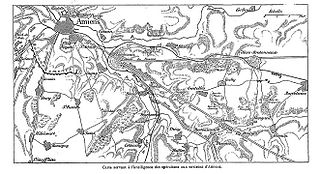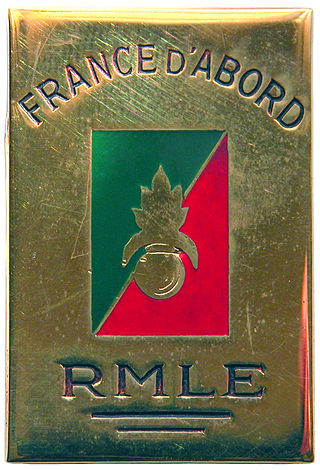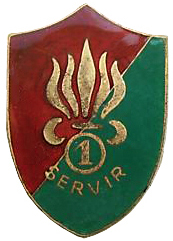
The Battle of Montmirail was fought between a French force led by Emperor Napoleon and two Allied corps commanded by Fabian Wilhelm von Osten-Sacken and Ludwig Yorck von Wartenburg. In hard fighting that lasted until evening, French troops including the Imperial Guard defeated Sacken's Russian soldiers and compelled them to retreat to the north. Part of Yorck's Prussian I Corps tried to intervene in the struggle but it was also driven off. The battle occurred near Montmirail, France, during the Six Days Campaign of the Napoleonic Wars. Montmirail is located 51 kilometres (32 mi) east of Meaux.

The siege of Maubeuge took place from 24 August – 7 September 1914, at the Entrenched Camp of Maubeuge the start of the First World War on the Western Front. The railway from Thionville to Luxembourg City, Arlon and Namur into Belgium had been cut by the demolition of the rail bridge over the Meuse at Namur in Belgium. During the siege, the German armies in the north could use only the single-track line from Trier to Liège, Brussels, Valenciennes and Cambrai, which could accommodate a maximum of forty trains a day.

Nogent-sur-Marne is a commune in the eastern suburbs of Paris, France. It is located 10.6 km (6.6 mi) from the centre of Paris. Nogent-sur-Marne is a sous-préfecture of the Val-de-Marne département, being the seat of the Arrondissement of Nogent-sur-Marne.

The arrondissement of Nogent-sur-Marne is an arrondissement of France in the Val-de-Marne departement in the Île-de-France region. It has 13 communes. Its population is 510,395 (2019), and its area is 56.3 km2 (21.7 sq mi).

The Russian Expeditionary Force [REF] was a World War I military force sent to France and Greece by the Russian Empire. In 1915, the French requested that Russian troops be sent to fight alongside their own army on the Western Front. Initially they asked for 300,000 men, an unrealistically high figure, probably based on assumptions about Russia's 'unlimited' reserves. General Mikhail Alekseev, the Imperial Chief of Staff, was opposed to sending any Russian troops, although Nicholas II finally agreed to send a unit of brigade strength. The first Russian brigade finally landed at Marseille in April 1916.

The 1st Foreign Regiment is a depot regiment of the Foreign Legion in the French Army. It is located at Aubagne.

The Battle of Amiens, also known as the Battle of Villers-Bretonneux, was fought on 27 November 1870 between French and Prussian forces during the Franco-Prussian War (1870–1871). It ended in a Prussian victory, forcing the French to retreat and allowing the Prussians to capture Amiens, France.

Jules Brunet was a French military officer who served the Tokugawa shogunate during the Boshin War in Japan. Originally sent to Japan as an artillery instructor with the French military mission of 1867, he refused to leave the country after the shōgun was defeated, and played a leading role in the separatist Republic of Ezo and its fight against forces of the Meiji Restoration. After the rebellion's defeat he returned to France, fought in the Franco-Prussian War, and later reached the rank of general of division and worked for the Ministry of War.

The Tonkin Expeditionary Corps was an important French military command based in northern Vietnam (Tonkin) from June 1883 to April 1886. The expeditionary corps fought the Tonkin Campaign (1883–86) taking part in campaigns against the Black Flag Army and the Chinese Yunnan and Guangxi Armies during the Sino-French War and the period of undeclared hostilities that preceded it, and in important operations against Vietnamese guerrilla bands during the subsequent 'Pacification of Tonkin'.

Henri Jules Bataille was a nineteenth-century French soldier. He rose to général de division of infantry, saw colonial service in Algeria, and fought in the Second Italian War of Independence and the Franco-Prussian War. He was awarded the Grand Cross of the Legion of Honour.

The fortifications of Paris in the 19th and 20th centuries comprise:

The Fort de la Pompelle, also known as Fort Herbillon, is one of a number of forts built around Reims after 1870 as part of a fortification belt in the Séré de Rivières system. The forts saw combat during the First World War in the defense of Reims. The fort is located about 2 kilometres (1.2 mi) north of the town of Sillery, next to the N44 road, between Reims and Châlons-en-Champagne. Constructed as a supporting position for larger forts and disarmed in 1913, it saw the heaviest fighting of the Reims forts. It was bombarded during the war and remains in a state of ruin.
The Battle of Châtillon, also known as the Battle of Châtillon-sous-Bagneux, was a skirmish in the Siege of Paris between France and North German Confederation in the Franco-Prussian War, took place on 13 October 1870. This is also considered the first battle in the history of the French Third Republic. In this fierce battle – occurred at Châtillon and Sceaux, Corps V of the Prussian army under the command of Lieutenant General Infantry Hugo von Kirchbach, along with the II Corps of the Kingdom of Bavaria by the Supreme Minister infantry Jakob von Hartmann which were the forces of the army Group 3 of Prussia by Prince Friedrich Wilhelm as General command., won a victory against an attack by the XIV Corps under General Renault - of the French army under General Auguste-Alexandre Ducrot. Although some soldiers under Ducrot fought well, the majority of his army became agitated. The French were forced to flee to Paris, losing the Châtillon Plateau - a very favorable defensive position overlooking the fortresses south of Paris - to the Germans. This was a disaster for the "justice" of the French army during the war, although the French reported that they suffered only minor losses.

The Marching Regimentof the Foreign Legion (RMLE) was a French military unit that fought in World War I and World War II. Initially composed of marching regiments from the 1st Foreign Regiment of Sidi Bel Abbes and the 2nd Foreign Infantry Regiment of Saida, Algeria, it re-formed as the 3rd Foreign Infantry Regiment.
The 2nd Marching Regiment of the 1st Foreign Regiment, was a French military unit of the Legion which formed the Marching Regiment of the Foreign Legion (R.M.L.E) and existed ephemerally from end of 1914 to 1915.

The 3rd Algerian Tirailleurs Regiment was an infantry unit of the Army of Africa in the French Army. Recruited primarily from Algerian Muslims, it was mainly commanded by French officers. The racial boundaries were not absolute, with some French volunteers serving in the ranks and a limited number of Muslims being appointed as officers. After 1913 a selective form of conscription was applied to Algerian Muslims but the majority of Muslim soldiers serving in the 3e R.T.A continued to be voluntarily enlisted.

The Marching Regiments of Foreign Volunteers were temporary formations of the Foreign Legion organized from Foreign volunteers during World War II. These regiments were formed on 16 September 1939:
On September 16, 1939, the war minister decided to form special corps of foreign volunteers part of the Foreign Legion. They were part of the Marching Regiments of Foreign Volunteers.

Jean-Jacques Alexis Uhrich, was a French général de division. He was the great uncle of Général d'armée Maurice Gamelin (1872–1958). Military governor of the city of Strasbourg in 1870, Uhrich is best known for his service during the Franco-Prussian War (1870–1871) as the commander of French forces during the Siege of Strasbourg and for surrendering the city to German forces.

The Battle of Longeau, was a battle of the Franco-Prussian War on December 16, 1870 in Longeau-Percey, near Dijon, France. The fighting lasted about three hours, and ended in a French retreat. Victory went to the Prussian Infantry Brigade under Colmar Freiherr von der Goltz and the German XIV Corps infantry under the command of Lieutenant General August von Werder, over French troops commanded by General Pierre Arbellot de Vacqueur, semt from Langres to Longeau. The French suffered significant losses of both manpower and equipment.

Adrien Alexandre Adolphe de Carrey de Bellemare, more commonly known as Carey de Bellemare was a French Divisional General who was most notable for his service during the Franco-Prussian War.




















